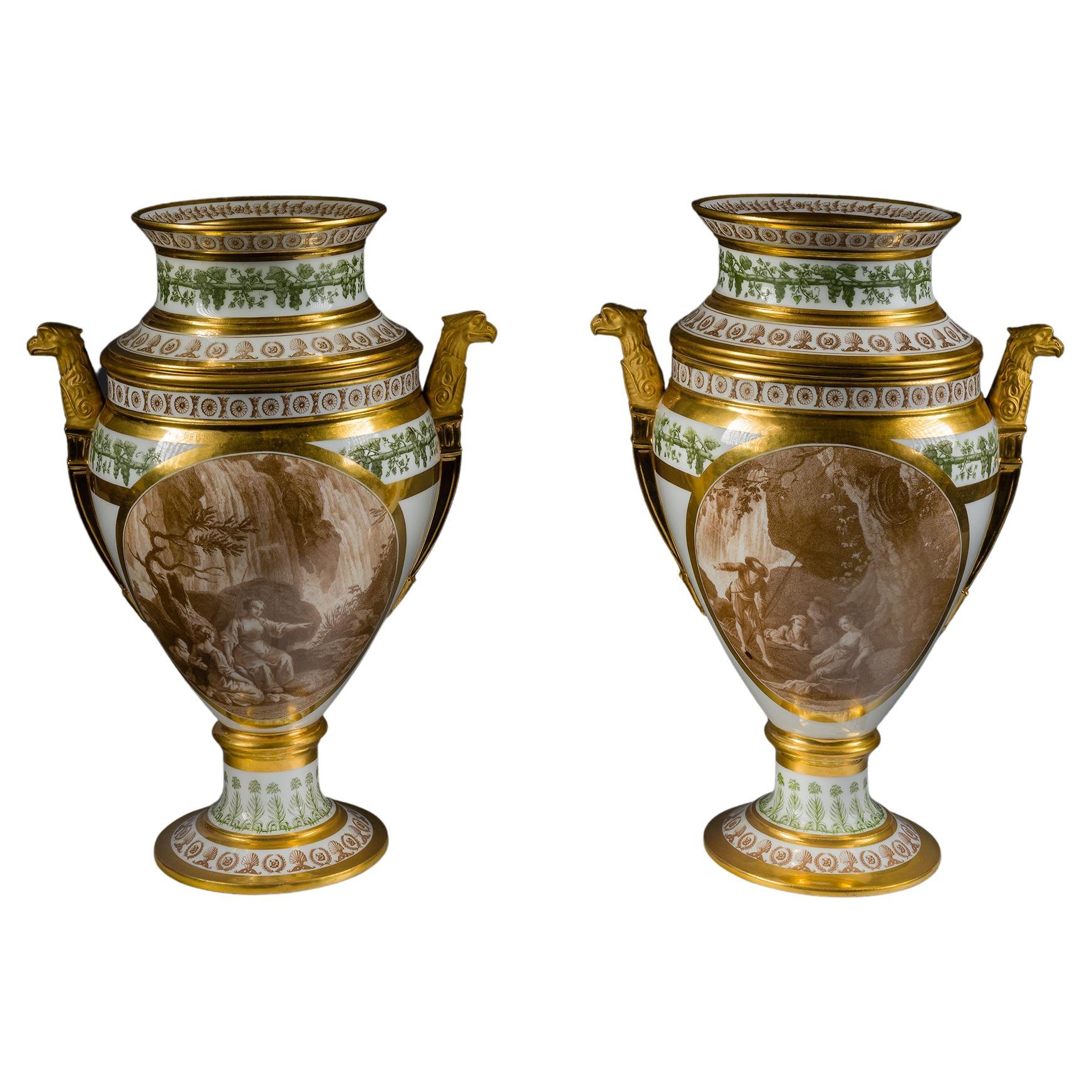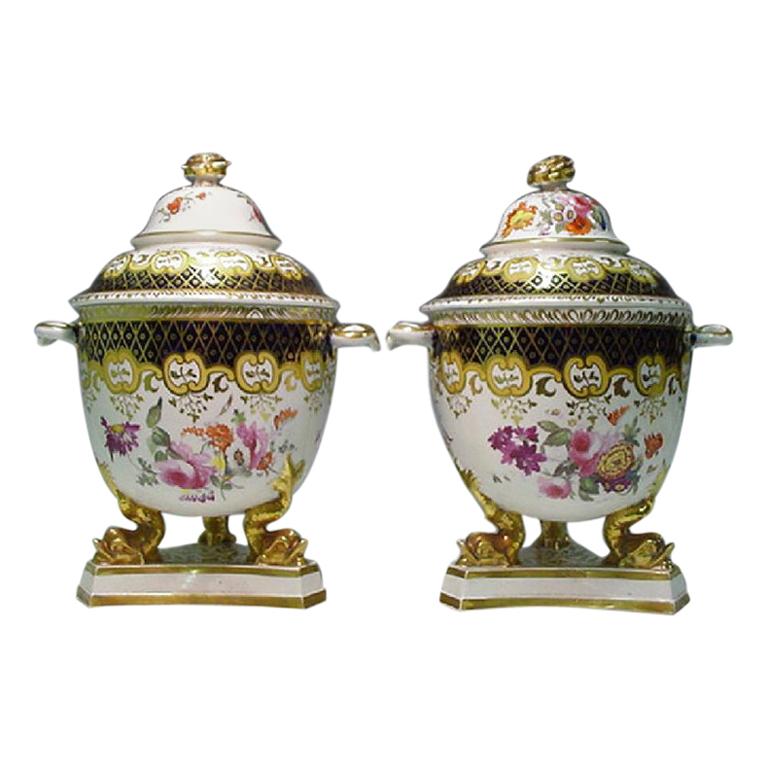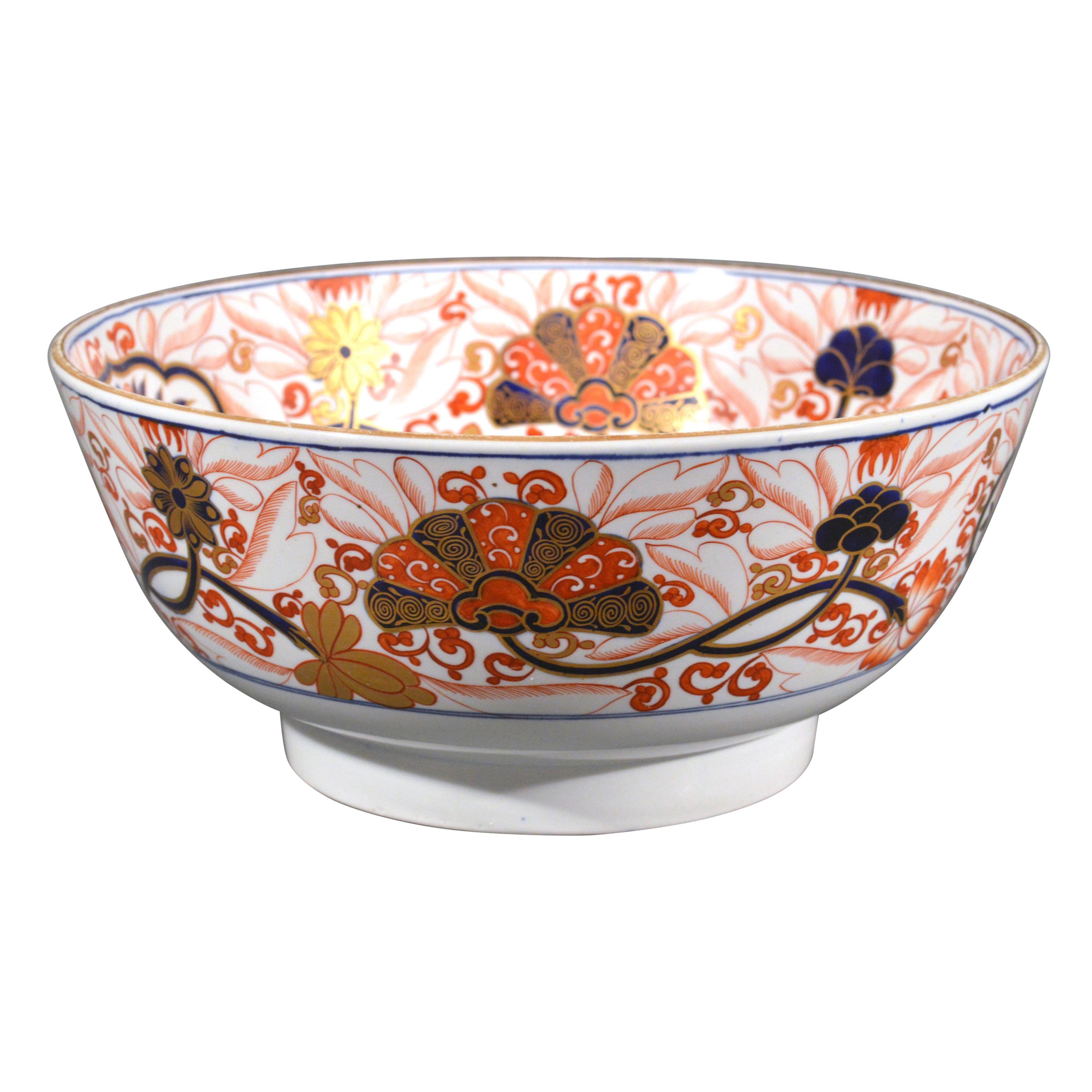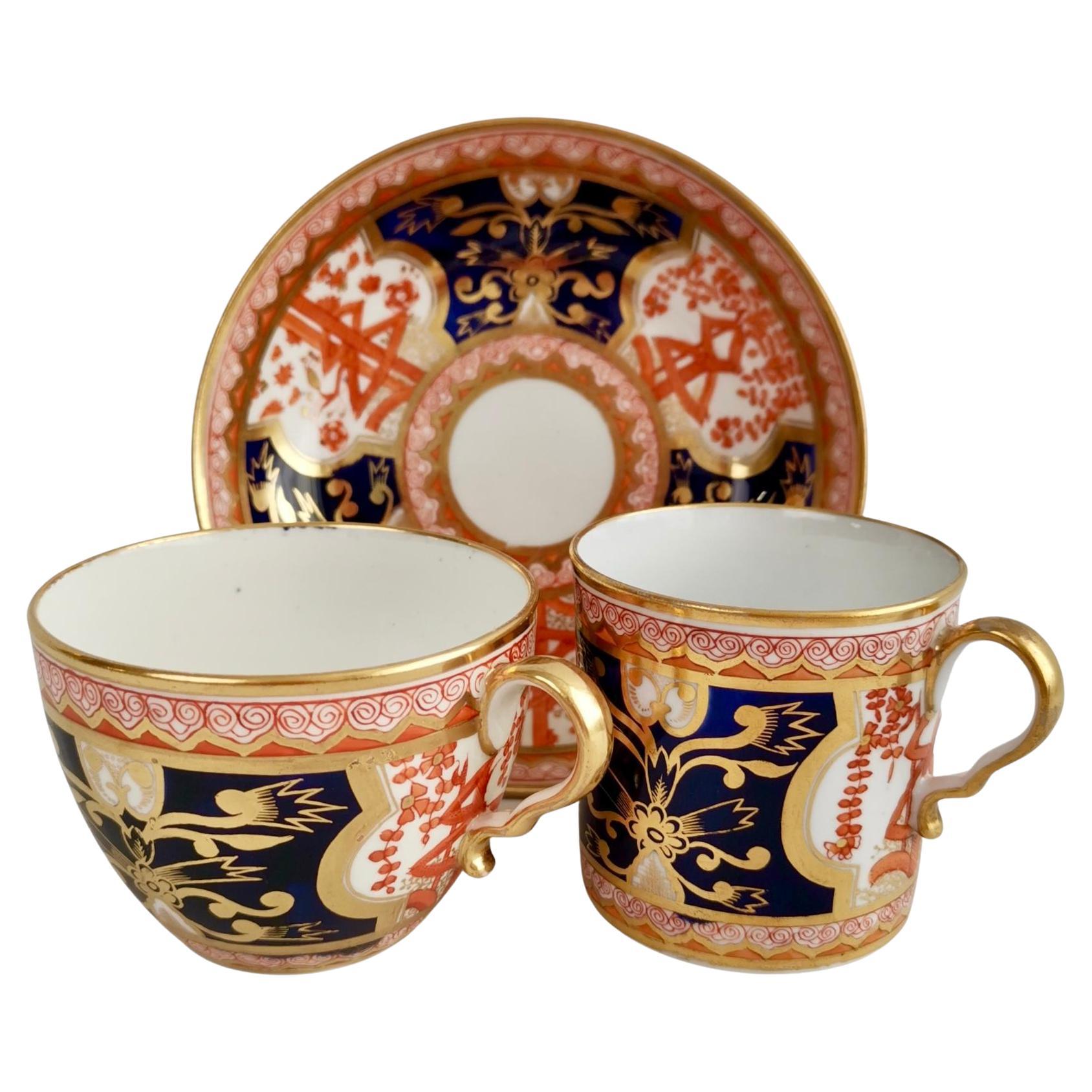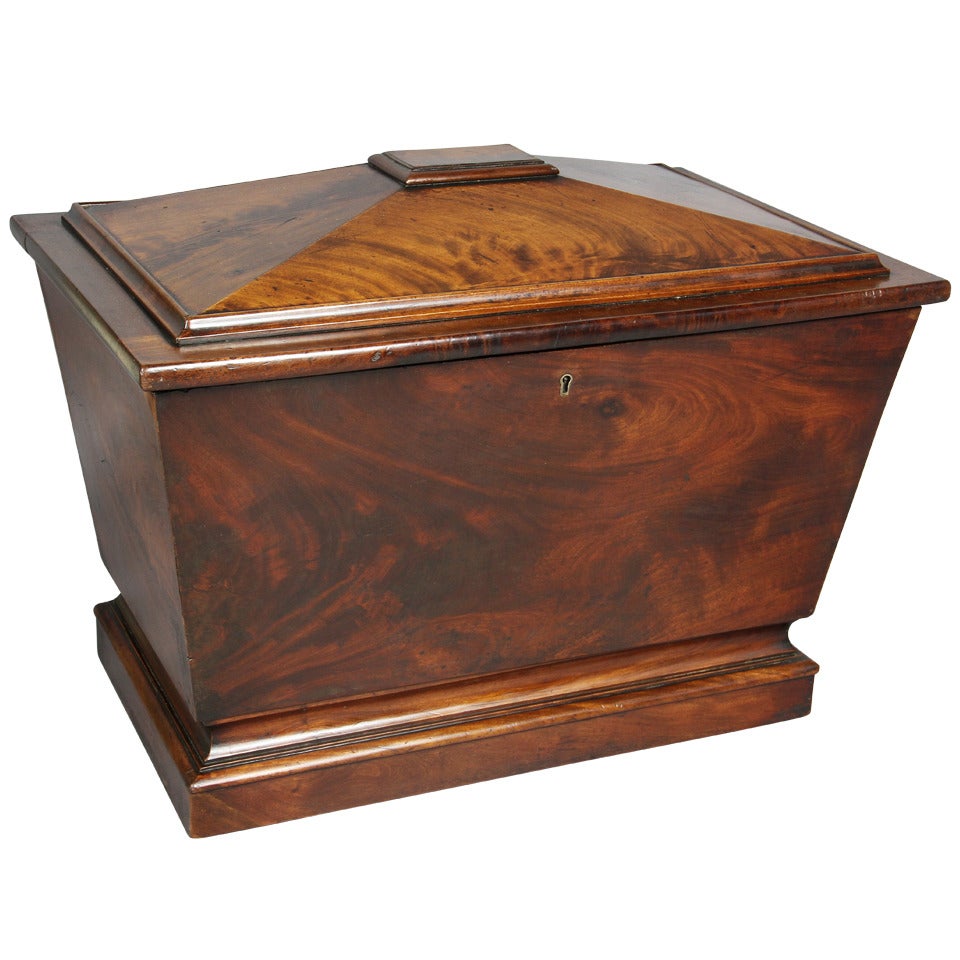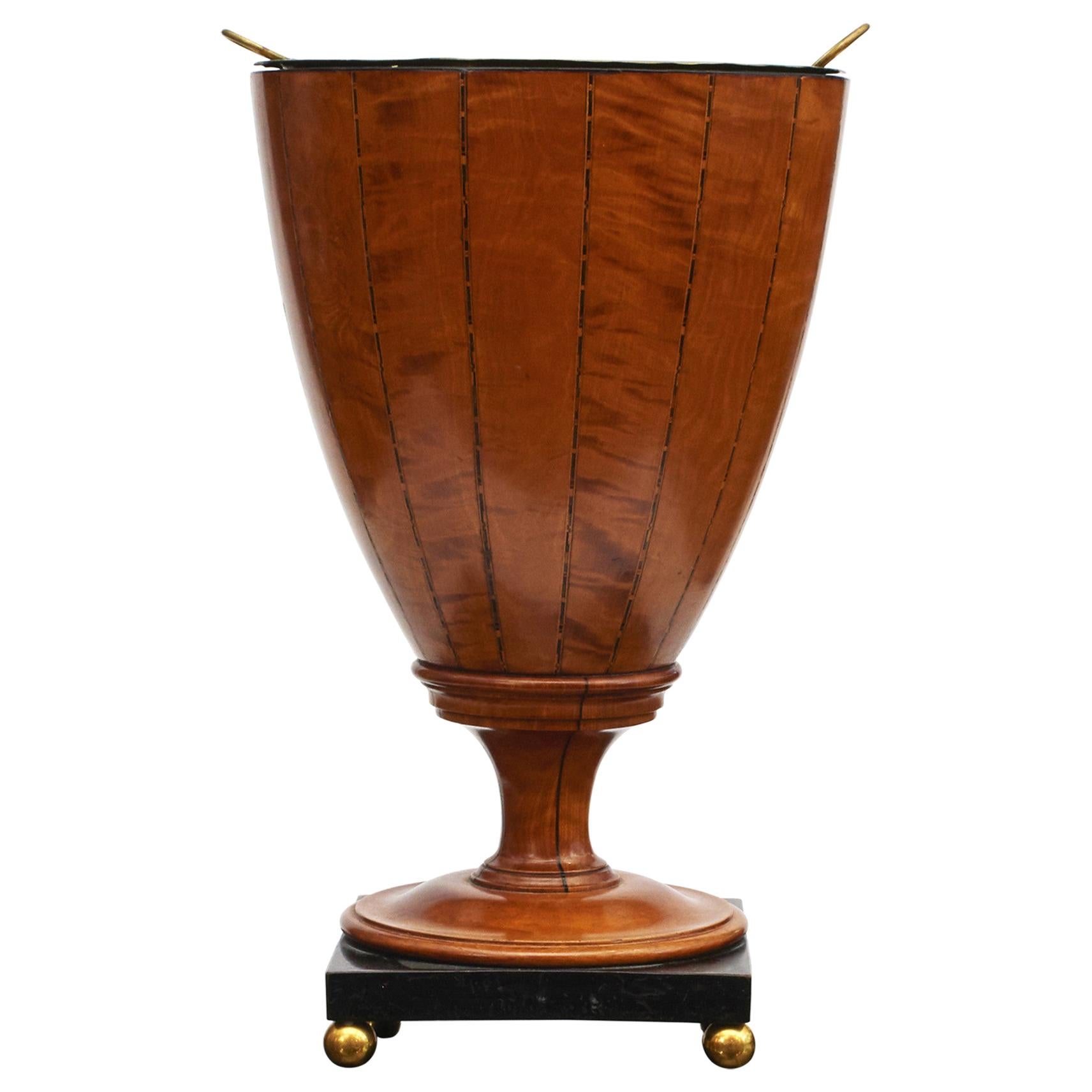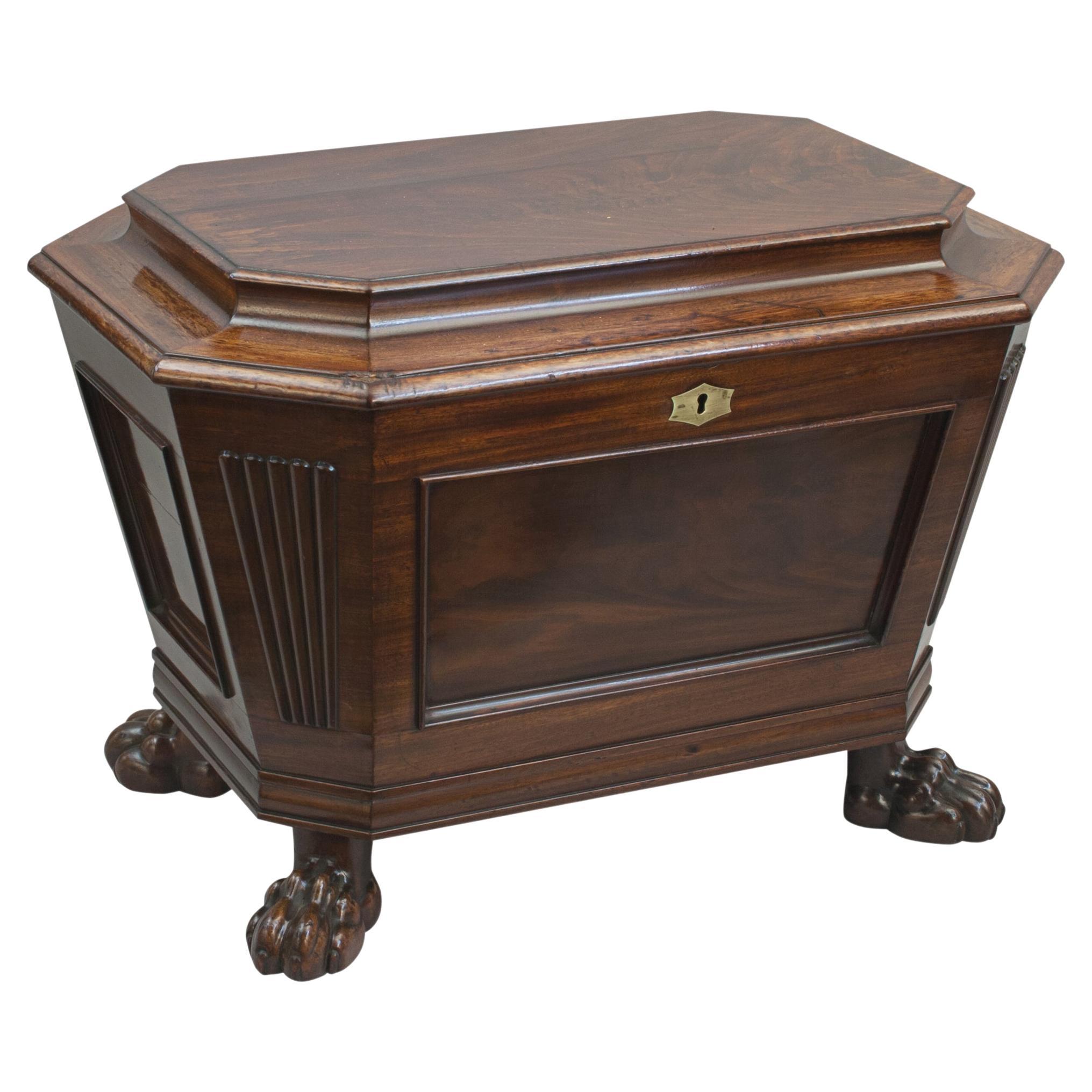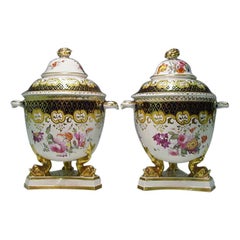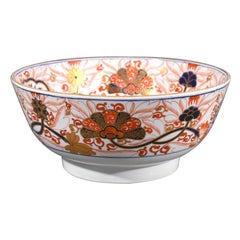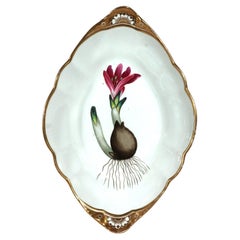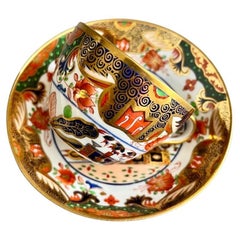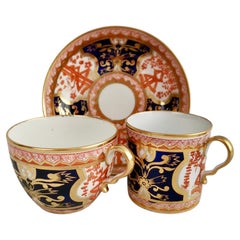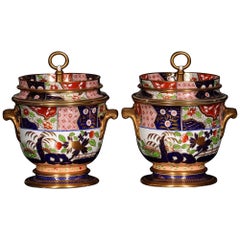
Regency Spode Porcelain Imari Fruit Coolers, Covers & Liners, Pattern 2957
View Similar Items
Regency Spode Porcelain Imari Fruit Coolers, Covers & Liners, Pattern 2957
About the Item
- Creator:Spode (Manufacturer)
- Dimensions:Height: 12 in (30.48 cm)Diameter: 10 in (25.4 cm)
- Style:Regency (Of the Period)
- Materials and Techniques:
- Place of Origin:
- Period:
- Date of Manufacture:1810
- Condition:Wear consistent with age and use.
- Seller Location:Downingtown, PA
- Reference Number:Seller: NY10415-kkiu1stDibs: LU861037817512
Spode
Spode is one of the oldest and most distinguished of the great pottery companies of Staffordshire, the time-honored home of English ceramics. The firm’s blue and white bone china transferware is a timeless classic. Spode dishes compose the sort of elegant dinner service that most of us envision on a traditional holiday table.
The company was established in 1770 in Stoke-on-Trent by Josiah Spode, a friend and neighbor of another estimable English ceramist, Josiah Wedgwood. Spode was particularly known for two technical achievements in the firm’s early decades. The first was to develop a standard formula for the making of bone china — a type of porcelain (made with a mixture of bone ash, minerals and clay) that is dazzlingly white and so strong it can be used to create very thin translucent plates and vessels. The other was to perfect the making of transferware. That process involves the transfer of pictorial images inked on tissue paper — such as the garden scenery in the famous Willow dish patterns — onto ceramics that are then sealed with a glaze. In 1833, following the sudden death of Josiah Spode III, business partner W.T. Copeland took over the company and changed its name. Collectors regard Copeland-marked pieces as Spode china. The Spode brand was revived in 1970.
From the 1820s onward, Spode enjoyed tremendous success both in Britain and elsewhere owing to the beauty and vitality of its decorative imagery. By some counts, Spode created more than 40,000 patterns in the 19th century. Many favorite Spode patterns — among them Blue Italian, India Tree, Greek and Woodland — date to the company’s early years. Spode’s most popular pattern, Christmas Tree, was introduced in 1938. Prices for Spode china vary widely, based on the size of the service, its condition and the pattern. An antique dinner service for 12 people or more, in good repair and complete with cups and serving dishes, will generally cost between $10,000 and $20,000. Such Spode services become heirlooms — a proud and timeless addition to a family’s table. And as you will see on these pages, Spode’s rich and varied wares offer a visual feast in and of themselves.
- Regency Ridgway Porcelain Fruit Coolers, Covers and LinersBy Ridgway PorcelainLocated in Downingtown, PAThe Ridgway porcelain coolers are decorated in pattern #1173. They have a circular body raised on three dolphin feet and trefoil base and painted with flo...Category
Antique Early 19th Century English Regency Serving Pieces
MaterialsPorcelain
- Regency Spode Imari Punch Bowl, Pattern # 2283By SpodeLocated in Downingtown, PASpode Imari Bowl, Pattern # 2283, Spodes New Stone China, Circa 1815-1820 The beautiful Spode new stone Imari punch bowl is painted in Imari col...Category
Antique Early 19th Century English Regency Barware
MaterialsCeramic
- Regency Spode Porcelain Botanical Specimen DishBy SpodeLocated in Downingtown, PASpode Porcelain Botanical Specimen Dish, Bulbocodium vernum, commonly called Spring Meadow Saffron, After William Curtis Circa 1810-20 The botanical is after William Curtis's The B...Category
Antique Early 19th Century English Regency Platters and Serveware
MaterialsPorcelain
- Regency Spode Neo-Classical Greek Pattern Blue TazzaBy SpodeLocated in Downingtown, PASpode Neo-Classical Greek Pattern Tazza Early-19th century The Spode pottery underglaze blue Greek pattern has an oval shaped top with a central des...Category
Antique Early 19th Century English Regency Pottery
MaterialsPearlware, Pottery
- Regency Spode Pottery Neo-Classical Greek Pattern Blue DishBy SpodeLocated in Downingtown, PARegency Spode Pottery Neo-Classical Greek Pattern Blue Dish, Bellerophon's Victory Over Chimera, Early-19th century The Spode Greek pattern pottery, sh...Category
Antique Early 19th Century English Neoclassical Pottery
MaterialsPearlware, Pottery
- George III Brass Bound Mahogany Cellaret with Liner on Beautifully Carved StandBy Thomas ChippendaleLocated in Downingtown, PAFlowers or Champagne? Or Both? George III Brass Bound Mahogany Wine Cooler or Cellaret, Third-quarter of 18th century The George III brass-bound mahogany wine cooler or cellar...Category
Antique Late 18th Century English George III Planters and Jardinieres
MaterialsBrass
- Pair of Porcelain Urn Form Fruit Coolers with Covers and LinersBy Stône, Coquerel, and Legros d'AnisyLocated in New York, NYPair Footed Fruit Coolers, about 1810-20 Stône, Coquerel, and Legros D’Anisy, Paris (active 1808–49) Porcelain, partially transfer printed in sepia and green and gilded Each, 13 1/2 in. high x 10 in. wide x 7 1/2 in. deep Signed and inscribed (on underside of one top and one base, with printed mark): STÔNE / COQUEREL / ET / LE GROS / PARIS / PAR BREVET D’INVENTION: Manufre de Décors sur Porcelaine Faience; variously inscribed with decorators’ initial in green and brown (on underside of one top and one base): M; variously inscribed with incised mark (on underside of one liner and both bottoms): 3; inscribed (in blue script, on the inside of one liner): 615 The Parisian firm of Stône, Coquerel, and Legros d'Anisy is distinguished for the important role that it played in the introduction of transfer-printed decoration on fine china in France. Although the process had been known and used in Great Britain since the eighteenth century, it was, according to Régine de Plinval de Guillebon in her book, Porcelain of Paris 1770–1850 (New York: Walker and Company, 1972), not until 1802 that Potter, Blancheron, Constant, Neppel, Cadet de Vaux & Denuelle took out a patent in France for transfer-printing on earthenware, and it was only on February 26, 1808, that John Hurford Stône, his brother-in-law, Athanase Marie Martin Coquerel, and Francois Antoine Legros d'Anisy not only took out a patent for transfer-printing on china, but also established a Stône, Coquerel, and d'Anisy partnership for the manufacture of transfer-printed ceramics. Their address from 1808 until 1818 was at 9, rue de Cadran, Paris. Prior to this, Stône and Coquerel had been partners at a creamware factory in Creil, France, and Legros d’Anisy had worked at the Sèvres factory, where he had apparently developed the transfer-printing technique for which his own firm became well known. “The process,” notes de Guillebon, was “based upon removing from the engraving a ‘pull’ made on a specially coated filter-paper, which was pressed onto the object to be decorated; this object itself was covered with a film. Firing took...Category
Antique Early 19th Century French Neoclassical Wine Coolers
MaterialsPorcelain
- Spode Porcelain Teacup, Imari Tobacco Leaf Pattern 967, Regency ca 1810By SpodeLocated in London, GBThis is a beautiful teacup and saucer made by Spode in about 1810. The set is decorated with the famous Imari Tobacco Leaf pattern 967, which was first introduced by Spode in 1806. ...Category
Antique 1810s English Regency Porcelain
MaterialsPorcelain
- Spode Porcelain Teacup Trio, Red Imari Dollar Pattern, Regency, ca 1810By SpodeLocated in London, GBThis is a beautiful orphaned teacup made by Spode in about 1810. It bears a beautiful Japanese-inspired Imari pattern. Spode was the great pioneer among the Georgian potters in England. Around the year 1800 he perfected the bone china recipe that has been used by British potters ever since, and he was also the leading potter behind the technique of transferware, making it possible for English potters to replace the Chinese export china, which had come to an end around that time, with their own designs. This was fundamental to a thriving industry that would last for about 150 years and provide half the world with their tableware. Spode porcelain is regarded as one of the highest quality porcelains around; for a soft-paste porcelain it is surprisingly hard and fine, and has a wonderful bright white colour. The pattern on this can is called "Dollar" pattern, a very famous pattern that was used by English potters in the 18th and early 19th Century. It is obvious why it is called “dollar” - but its origin is less obvious! It is thought that this pattern was derived from a very old Chinese pattern depicting a tree with elaborate foliage that hides a Chinese character representing longevity or happiness. Traditionally, this went with a an image called “Taotie”, which was used on very ancient bronze vases...Category
Antique Early 1800s English Regency Porcelain
MaterialsPorcelain
$420 Sale Price / set20% OffFree Shipping - Regency Mahogany Wine CoolerBy Charles Heathcote TathamLocated in Greenwich, CTVery fine Regency sarcophagus form wine cooler in highly figured mahogany after a design by Charles Heathcote Tatham, the faceted top over tap...Category
Antique 1810s English Regency Wine Coolers
MaterialsLead
$3,900 Sale Price29% Off - Regency Mahogany Wine CoolerLocated in Essex, MARegency mahogany wine cooler. Sarcophagus form.Category
Antique 19th Century British Regency Wine Coolers
MaterialsMahogany
- Regency Mahogany Wine CoolerLocated in Essex, MASarcophagus form with domed hinged top with flat surface. Conforming beveled case with side lions head brass handles. Lions paw feet.Category
Antique 1810s English Regency Wine Coolers
MaterialsBrass
